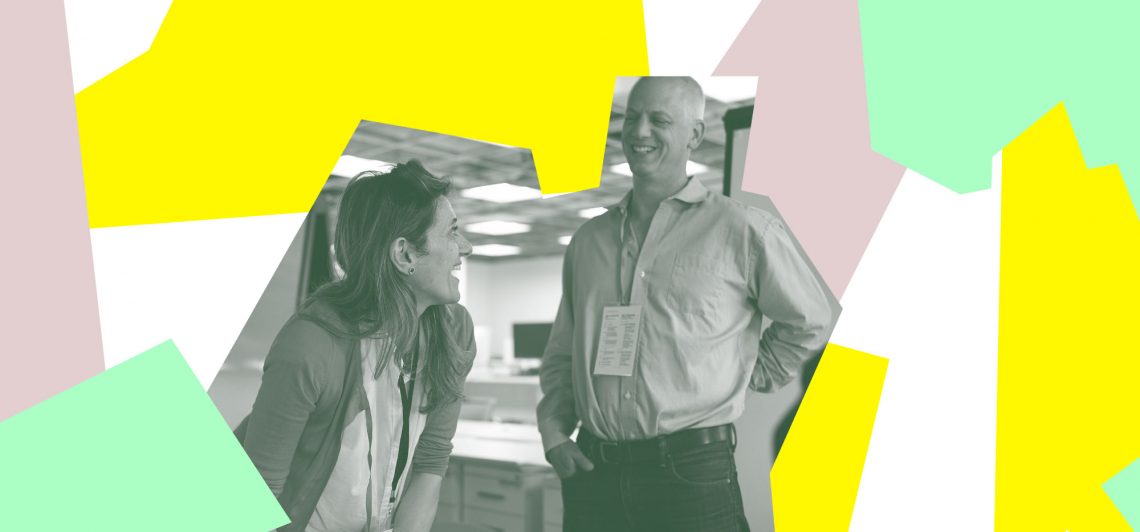More Convening, Less Conference
By Ruth Schmidt
May 8, 2019

Expect conversations, not keynotes.
Other conferences have speakers—we’ll have participants. Questions and answers will be threaded through our panels, not pushed to the very end of them. And breakout sessions and workshops will allow us to put the ideas we exchange to work.
In our second annual Design Intersections conference, we’re once again prioritizing participation and dialogue, convening a range of disciplines, people, and ideas around a shared theme—Design + Networks + Activation—to explore our intersections and interactions.
Why Design + Networks + Activation?
It’s a common joke that designers like threes—two is too few, four too tidy, five is ok, but six and above is too much. Three, on the other hand, provides stability but not rigidity. It helps us triangulate, and interrogates the impulse to look at others as opposites.
Design: a diversity of voices
The act of design, at its core, is to build with intent. Design is also about viewing things obliquely, less oriented toward confirming what we already know and more toward seeing the familiar in new ways.
Having a variety of viewpoints is critical to seeing things differently. Confirmation bias can all too easily creep in when we’re only surrounded by like-minded opinions. To engage with these diverse perspectives we must accept a level of risk, even discomfort. Another requirement: a willingness to challenge our own deeply embedded assumptions not only about how to solve problems, but perhaps even which problems we see, and which ones we feel equipped to pursue.
In the context of this community of practice, our intent is centered on purposefully creating the conditions that enable diverse ideas and actions to both flourish and conflict, and grow stronger as a result:
- How might we design a gathering that best supports conversations that wouldn’t happen otherwise?
- What kind of arc or infrastructure will most effectively bring different perspectives together and facilitate useful exchange?
- How can we support an experience that increases the likelihood for ‘aha’ moments, but which also allows for moments of reflection?
Networks: surfacing shared goals
Too often, conferences can fall into the rhythm of Us and Them: Experts sharing wisdom with the Masses, or the Establishment and the Up-and-comers, or even Hosts and Participants. This kind of binary opposition, even when unintentional, tends to emphasize difference.
Networks, on the other hand, require an understanding of shared goals. In order to thrive, networks need multiple perspectives at the table and a willingness to recognize a diverse set of skills, expertise, and experience.
Within our Design Intersections community, we will all benefit from taking on multiple, even contradictory roles. We will all need to be contributors and receivers, experts and novices. This entails identifying similarities and bringing an openness to seeing how other entities approach like challenges in different ways. It also insists on the recognition that new insight and forms of expertise may be found in emergent and activist approaches, as much as in comfortable and established modes of operating.
At the same time, we must always be questioning who is not at the table at all. Recipients of services are increasingly invited in when ideas for those services are being generated, but are still frequently left out of the networks that create the agendas or drive these conversations. This means that those who are likely to be on the receiving end of interventions may have little voice in conversations that shape their lives in significant or long-term ways. How might the network formed by this community of practice be more inclusive, not only bringing learned experience to the table, but including those who live that experience?
Activation: an ongoing effort
It’s difficult enough to construct a network, but building it is only a first step. An inert or untended network is likely to wither, and has little long-term value for any of its participants. Networks must be active to be effective, and must be continually cultivated to grow increasingly useful over time. Our time together in Chicago will be of limited value unless we can find ways to nurture this temporary community of practice and encourage it to persist.
In other words, activation can’t be a single originating spark, but an ongoing effort that actively stokes participation over time. Activation takes work; good intentions are no match for inertia. But in a world where our ability to be effective increasingly relies on a constellation of skills, expertise, and reach, it is paramount. In advance of our gathering, we might reflect on what we gain from contributing to this conversation, but what we might give as well:
- What deficits might we have, both individually and organizationally, that others from this group might offer?
- What capabilities do we have that might be of value to others over time?
So let’s start the conversation now—on LinkedIn, Twitter, Instagram, Facebook with—#designintersections.
Tell us:
- What are your questions?
- How do design, networks, and/or activation enter into your work?
- What do you want to take away from our time together?
Join us this May 22–23 at Design Intersections 2019 to gain entrepreneurial skills, learn from activists, and find new ways to lead. Learn how to produce organizational change and make large-scale, sustainable impact